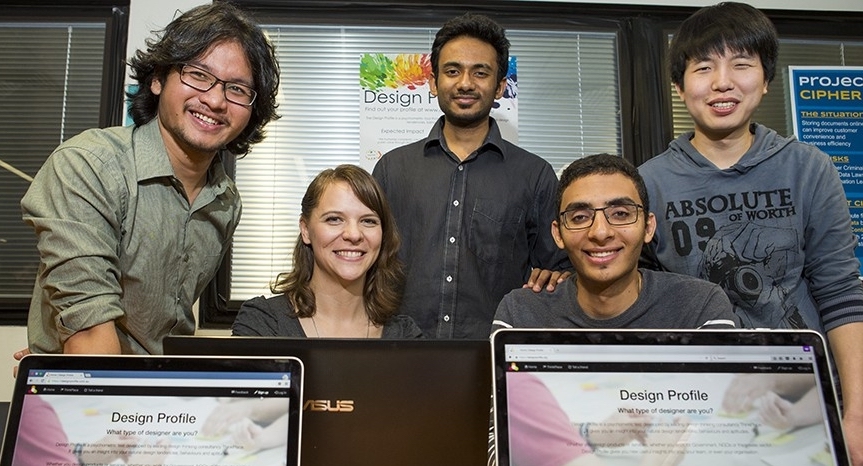 |
‘Design Profile’. Photo by Stuart Hay |
It is a little daunting walking into a classroom mid-semester with a room full of experienced students who have bonded into teams. So I decided to treat it like a job application, and put up on screen my LinkedIn profile. The students were not that impressed with my past work, as much of it is from before they were born. However, there were interested in my 700+ contacts, and asked how does someone starting out get these. My answer was that they need to gain experience outside their their course and that will be assessed in their last assignment.
This was a little off topic for the tutorial, which was supposed to be about hearing from them where their projects are up to. However, I pointed out that the Work Portfolio Package, their last assessment item (worth 20%), requires them to write a job application and provide evidence of how professional they are. A large part of being professional is learning to learn, and learning to work with people.
A previous version of ANU Techlauncher required a reflective portfolio, where students commented on their learning. However, this is a very abstract concept to get across to students generally. It is particularly difficult for STEM students to understand the relevance of reflection (it is easier for educators from a social science). I still have difficulty with reflection, even after successfully completing a portfolio for an MEd capstone, for fellowship of the Higher Education Academy and most recently for the ANU Technology-Enhanced Learning in Higher Education Certificate.
For TechLauncher, the reflection was recast as a job application. The student has to explain how their experience during the course is relevant to a real job. This is essentially the same learning reflection exercise, but in a format which is very relevant to a final year student who will soon need a job. What many students have difficulty with is that this is not just about what they learned as part of the course content, but what they sought out to learn externally.
To make the need for reflection explicit, the marking criteria for the portfolio are about the student's professional approach: evidence of decision-making, maturity of reflection, professional tone, evidence of life-long learning, acting on feedback and professional attitude.
Of the criteria, evidence of life-long learning, causes the most difficulty. Having been the recipients of carefully curated education for years, students have difficulty with the idea of seeking out learning for themselves. The usually response is "Can we just watch some YouTube videos?". The assumption is that any more structured learning is something where they have to pay someone to tell them what to do.
Students, I suggest, need to be shown how to go out and find learning for themselves. They also need to be told it is okay if this is outside their discipline, provided their is some relevance (such as soft skills). At and around universities there are many learning opportunities, some formal, some informal. What the student needs to do is work out what they want to learn, what is available for that, how they will know they learned something, and in professional terms, what evidence will they have to show an assessor, or employer, that they learned.
At least that is what I tried to get across to the students in the tutorial last week. Just watching some videos what not enough. They had to first work out what they needed to learn, then decide if the videos were suitable, then decide if they had really learned, and lastly provide some documentation of this. As a certified computer professional I am required to do 30 hours of such training per year, with evidence and possible audit of my claims.
Finding extra learning at a university and particularly in a university city such as Canberra, is not that difficult. There are free and low cost courses run by the universities and affiliated bodies, such as the Canberra Innovation Network. There are university clubs and societies, such as the ANU Computer Science Student Association. Student membership of professional bodies, such as the Australian Computer Society and Engineers Australia. provides the opportunity to not only attend events, but also take part in running them. The professional contacts come as a by product of these activities, from meeting people.
No comments:
Post a Comment